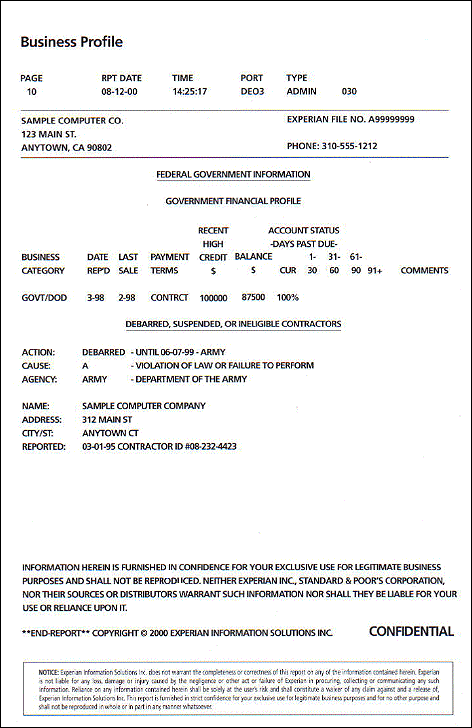It will show you the complete information about the business
Before you make important business decisions, Check credit for your potential business and check a prospective customer’s credit.

Sample ∇
Executive Summary - Report
Evaluate risk at a glance, the executive summary of the Business Credit Report gives a quick overview of a business’ credit behavior. Here, problem areas can be identified, and then researched more thoroughly in the data contained in the main body of the report. The “Days Beyond Term” (DBT) and predicted DBT give an estimation of a company’s risk in a single number. The index below the report gives a brief explanation of the main features of the Executive Summary:
1. Description of Business – Company’s primary and secondary business categories plus the date of incorporation.
2. Days Beyond Terms (DBT) – Dollar weighted average number of days past the invoice date that business pays its bills.
3. Predicted DBT – A forecast of the expected days beyond terms for 60 days into the future, based on historical credit trends.
4. DBT Norms – Compares the company’s average DBT against the average DBT of other businesses within the same industry, and the average DBT for all industries.
5. DBT range based on current payment behavior – Indicates where the current DBT falls in comparison to other US businesses.
6. Historical payment guide – Includes, six month account balance range, highest credit amount extended, industry payment comparison and payment trend indicator.
7. Significant derogatory data – summarizes collected public record data and other derogatory information, including; bankruptcies within the last nine years, tax liens, UCC filings, reported collection amounts and write-off telecommunication accounts.

Trade Payment - Page 1
For comparison purposes, a plus (+), a minus (-) or an equal (=) sign next to each tradeline with a balance in the left column of the page, indicates whether the DBT or tradeline os more than five days higher (-), more than five days lower (+) or withing five days of the average DBT for that business category.

Trade Payment - Page 2
For comparison purposes, a plus (+), a minus (-) or an equal (=) sign next to each tradeline with a balance in the left column of the page, indicates whether the DBT or tradeline is more than five days higher (-), more than five days lower (+) or within five days of the average DBT for that business category.
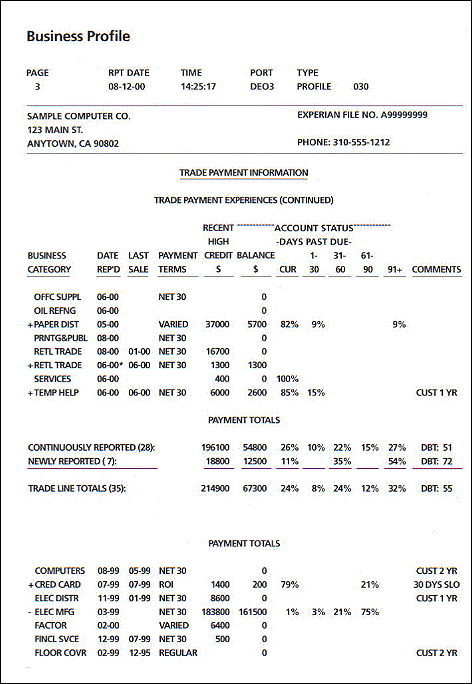
Payment Trends - Report
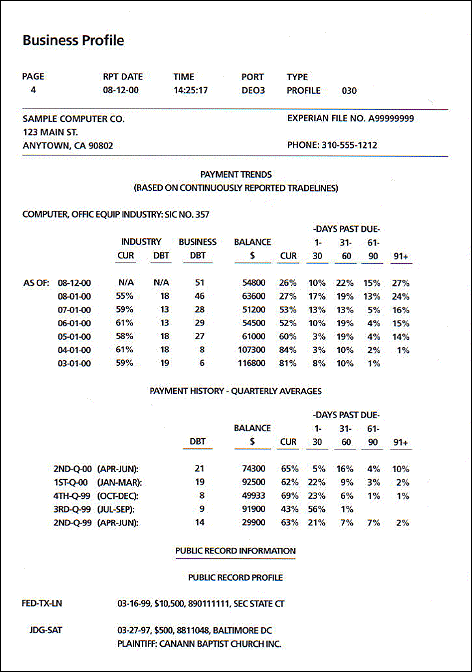
Uniform Commercial Code - Page 1
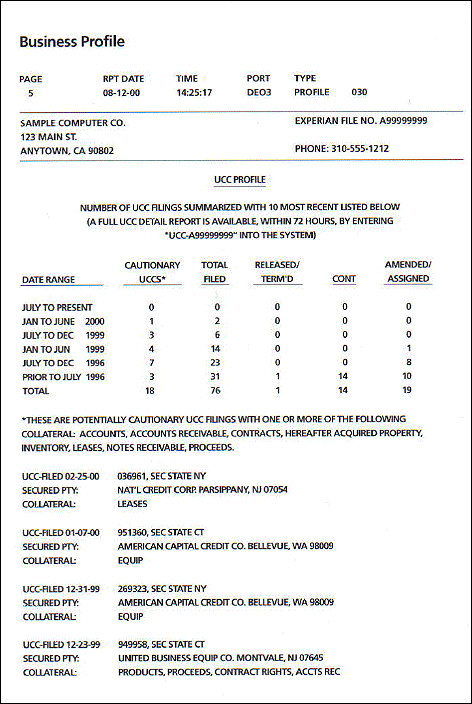
Uniform Commercial Code - Page 2
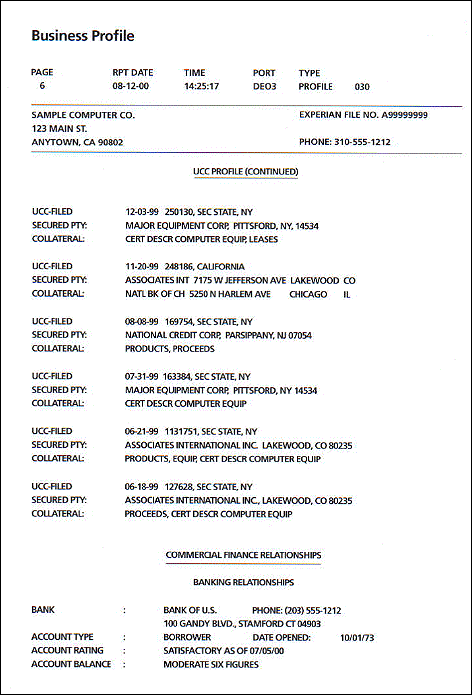
Company Background Information - Report
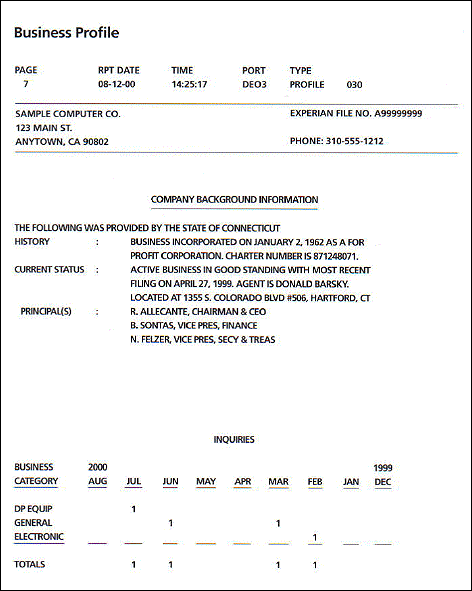
Standard & Poor's Information - Page 1

Standard & Poor's Information - Page 2

Federal Government Information - Report
